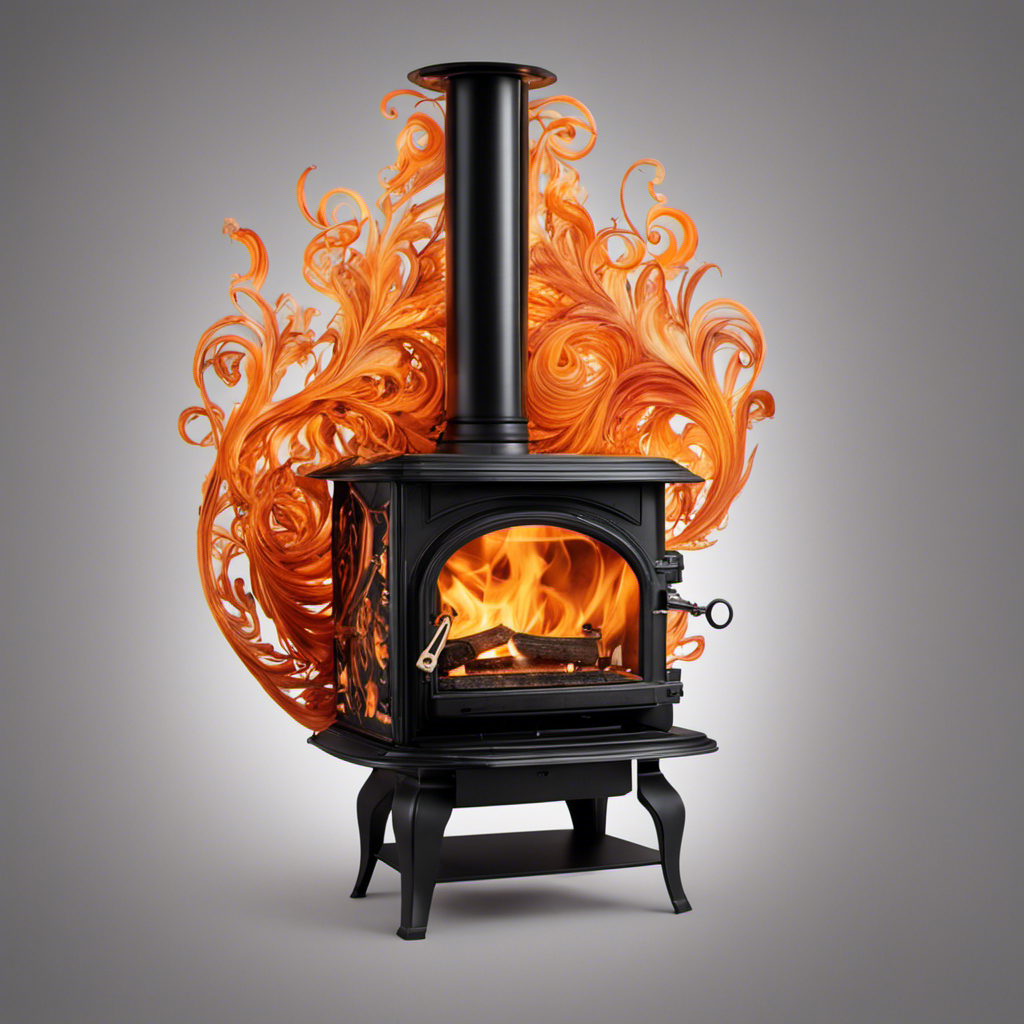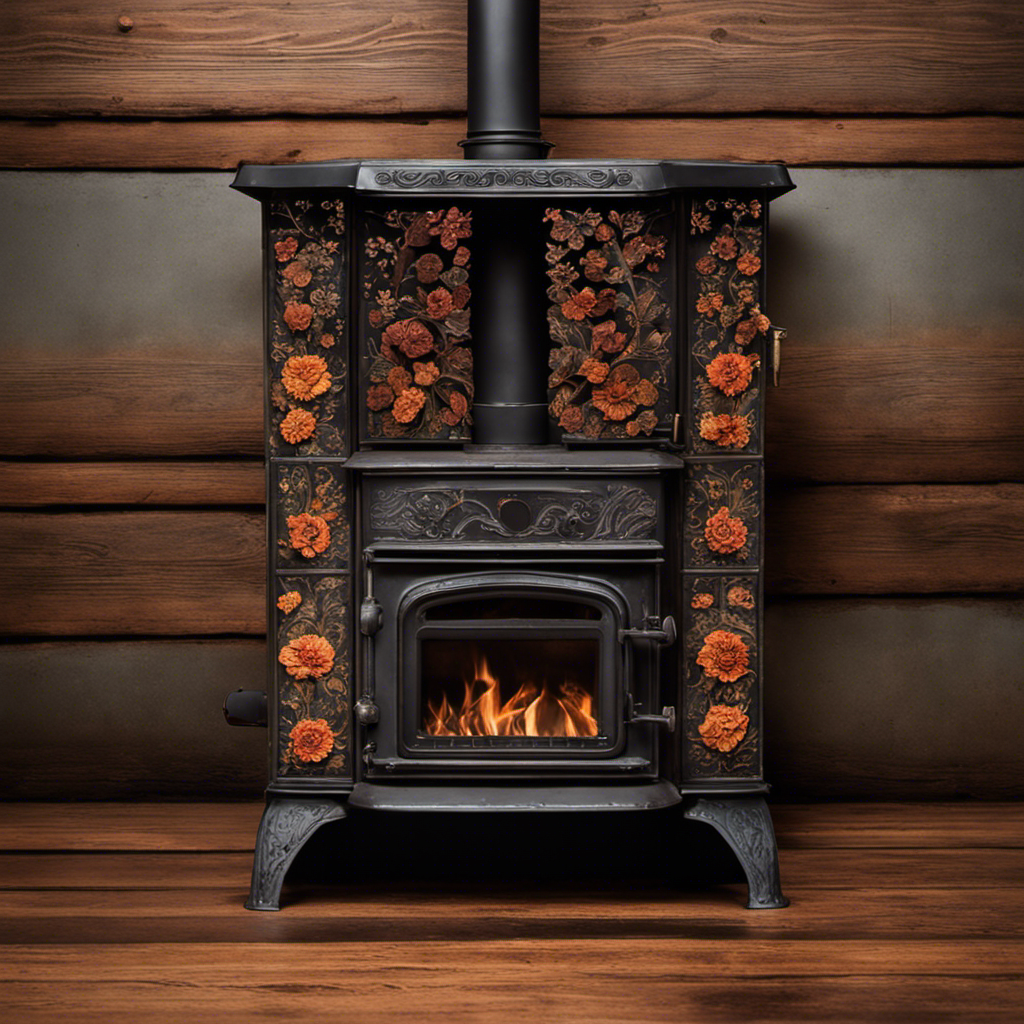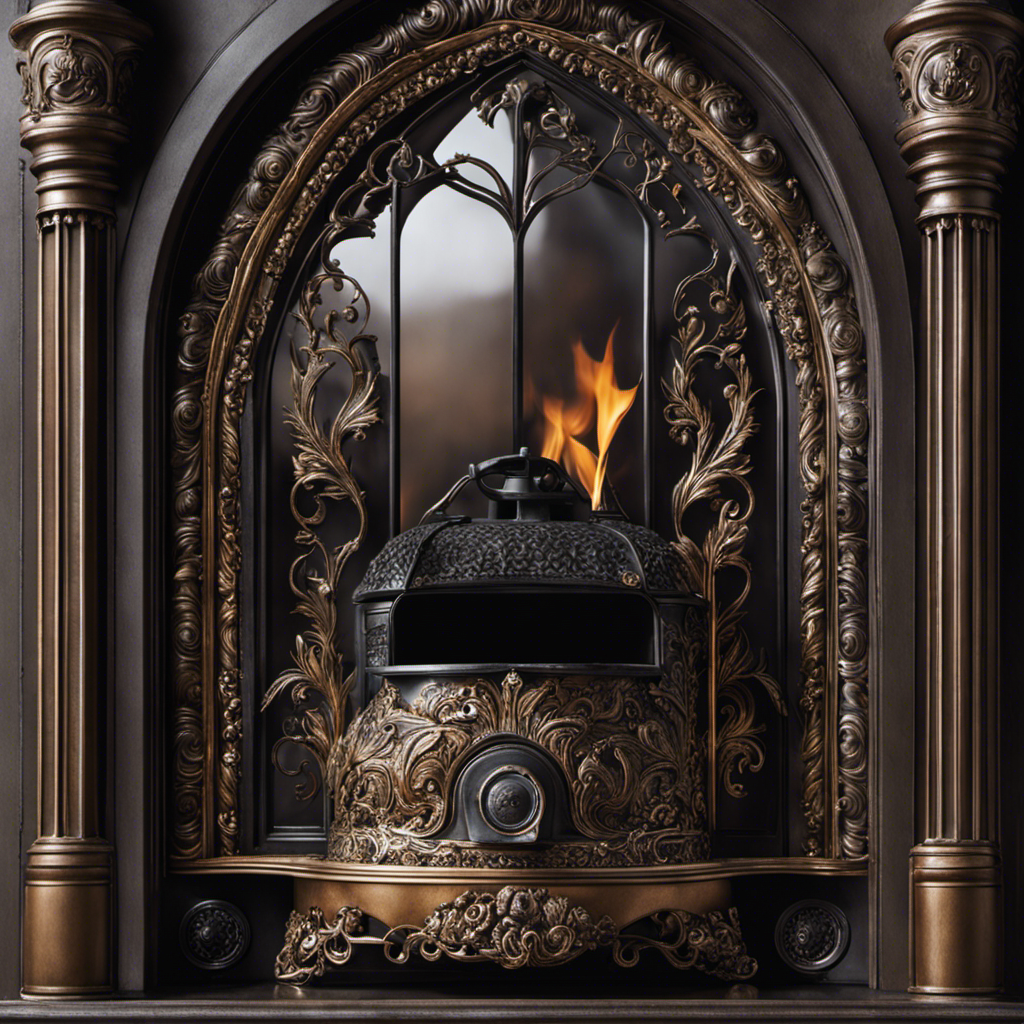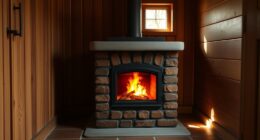Were you aware that close to 80% of individuals who utilize wood-burning stoves encounter issues with smoke? If you happen to be one of these people, you’re probably keen on learning about the reasons behind this aggravating issue.
In this article, I’ll explore the key factors that contribute to wood stoves smoking. From inadequate ventilation to improper wood selection, we’ll delve into the evidence-based reasons behind this issue.
So, let’s uncover the secrets and find practical solutions to keep the smoke at bay.
Key Takeaways
- Blocked chimney or flue restricts airflow and causes smoke to back up into the room
- Burning wet or unseasoned wood results in excessive smoke and poor combustion
- Neglecting chimney maintenance can lead to serious consequences such as chimney fires or carbon monoxide poisoning
- Using the wrong size stovepipe restricts airflow, leading to poor combustion and increased smoke production
Inadequate Ventilation
I can’t enjoy a warm fire because the smoke lingers in the room due to inadequate ventilation.
Ventilation troubleshooting is crucial to prevent smoke from filling up the space. One common issue is a blocked chimney or flue, which restricts the flow of air and causes the smoke to back up into the room. To address this, regular chimney maintenance and cleaning are necessary.
Another strategy is to ensure that the damper is fully open when starting a fire and adjusting it accordingly to maintain proper airflow. Additionally, installing an exhaust fan or improving the overall air circulation in the room can help remove the smoke more effectively.
By implementing these smoke prevention strategies and addressing ventilation issues, one can enjoy a cozy fire without the annoyance of lingering smoke.
Now, let’s explore the next issue: improper wood selection.
Improper Wood Selection
Burning wet or unseasoned wood can result in excessive smoke and poor combustion, so it’s important to properly dry and select the right type of wood for optimal wood stove performance.
One crucial factor to consider is the wood moisture content. High moisture content in wood leads to incomplete combustion, resulting in more smoke and lower heat output. Wood should ideally be dried to a moisture content of around 20% or lower before use. This can be achieved by storing the wood in a dry, well-ventilated area for at least six months.
Another important consideration is wood density. Dense hardwoods such as oak or maple produce more heat and burn longer compared to softwoods like pine. Selecting wood with the right density can significantly improve the efficiency of your wood stove and reduce smoke emissions.
Damaged or Faulty Chimney
My chimney sweep found a crack in the flue lining during the annual inspection, indicating a damaged or faulty chimney.
Chimney repair is essential to ensure the safe and efficient operation of a wood stove. Neglecting chimney maintenance can lead to serious consequences, such as chimney fires or carbon monoxide poisoning. To prevent these risks, regular inspections and cleaning should be performed by a professional chimney sweep.
Additionally, following some maintenance tips can help prolong the life of the chimney. These include using dry and seasoned wood, avoiding burning trash or paper, and scheduling regular chimney inspections. Taking these steps can prevent the accumulation of creosote and other debris, reducing the likelihood of chimney damage.
However, even with proper maintenance, incorrect stove installation can still pose a risk.
Incorrect Stove Installation
Two common mistakes to avoid when installing a wood stove are using the wrong size stovepipe and neglecting to secure the stove properly. These installation errors can lead to improper maintenance and potential safety hazards.
Using the wrong size stovepipe can cause a restricted airflow, leading to poor combustion and increased smoke production. It’s important to follow the manufacturer’s guidelines and ensure that the stovepipe is the correct diameter for optimal performance.
Neglecting to secure the stove properly can also result in safety issues. A loose or unstable stove can pose a risk of tipping over, causing damage to the surrounding area or even starting a fire. Properly securing the stove ensures stability and reduces the likelihood of accidents.
Avoiding these installation errors and practicing proper maintenance is crucial for the safe and efficient operation of a wood stove.
Insufficient Draft or Airflow
I need to adjust the damper and open the window because the insufficient draft is causing smoke to fill the room.
When it comes to wood stoves, proper ventilation is crucial for a clean and efficient combustion process. The draft, or airflow, plays a significant role in ensuring that the smoke and gases produced during combustion are effectively expelled from the stove and released outside.
Insufficient draft can occur due to various factors, such as a closed damper, restricted airflow, or weather conditions. During unfavorable weather conditions, such as high atmospheric pressure or strong winds, the draft may be affected, leading to smoke backdraft.
It’s important to address this issue promptly by adjusting the damper or opening a window to allow for adequate airflow and maintain a clear and smoke-free environment.
Frequently Asked Questions
Can a Wood Stove Produce Smoke Even if It Has Adequate Ventilation?
Yes, a wood stove can produce smoke even with proper ventilation. The causes of smoke in a wood stove can include improper fuel, inadequate draft, or a blocked chimney. Troubleshooting smoke requires identifying and addressing these issues.
How Can I Determine the Proper Wood to Use in My Wood Stove to Avoid Smoke?
To avoid smoke from my wood stove, I need to choose the proper wood. Some tips for reducing smoke production include using seasoned hardwood, ensuring proper airflow, and avoiding wet or green wood.
What Are Some Signs of a Damaged or Faulty Chimney That Could Cause Smoke?
Signs of chimney damage can cause smoke from a wood stove. To avoid this, proper wood selection is crucial. Look for signs like cracks, loose bricks, or excessive soot, and ensure the chimney is regularly inspected and maintained.
Are There Any Specific Guidelines or Regulations for Correctly Installing a Wood Stove to Prevent Smoke?
When it comes to installing a wood stove, following the guidelines for proper installation is crucial. Common mistakes, like improper venting or inadequate clearance, can lead to smoke issues.
What Are Some Potential Reasons for Insufficient Draft or Airflow in a Wood Stove, Leading to Smoke Production?
Insufficient draft in a wood stove can lead to smoke production. Airflow restrictions, such as a clogged chimney or closed dampers, hinder proper ventilation. It’s ironic how something meant to provide warmth can fill the room with smoke.
Conclusion
After analyzing the factors that cause a wood stove to smoke, it becomes evident that proper ventilation, wood selection, chimney maintenance, and stove installation are crucial.
Insufficient draft or airflow can also contribute to smoke production.
Just like a symphony requires each instrument to be in harmony, a well-functioning wood stove relies on all these elements working together seamlessly.
Neglecting any one of them can disrupt the rhythm and flow, resulting in a smoky and unpleasant experience.











